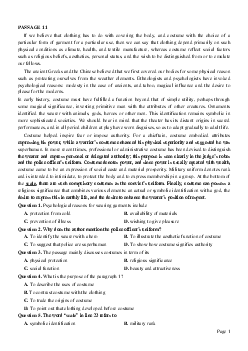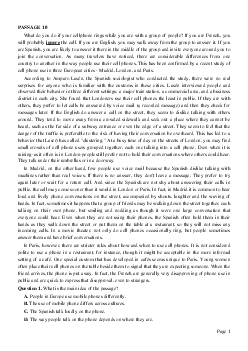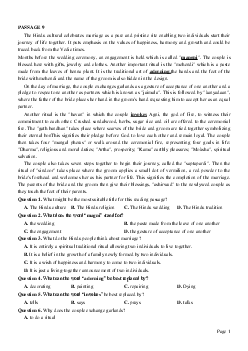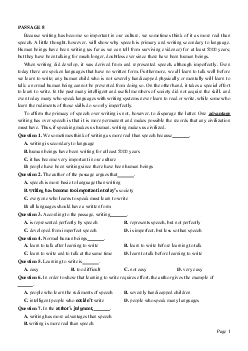

Preview text:
PASSAGE 16
Long ago a lot of people thought the moon was a god. Other people thought it was just a light in the sky.
And others thought it was a big ball of cheese.
Then telescopes were made. And men saw that the moon was really another world. They wondered what
it was like. They dreamed of going there.
On July 20, 1969, that dream came true. Two American men landed on the moon. Their names were Neil Armstrong and Edwin Aldrin.
The first thing the men found was that the moon is covered with dust. The dust is so thick that the men
left footprints where they walked. Those were the first marks a living thing had ever made on the moon.
And they could stay there for years and years. There is no wind or rain to wipe them off.
The two men walked on the moon for hours. They picked up rocks to bring back to earth for study. They
dug up dirt to bring back. They set up machines to find out things people wanted to know. Then they
climbed back into their moon landing craft.
Next day the landing craft roared as the two men took off from the moon. They joined Michael Collins in
the spaceship that waited for them above the moon. Then they were off on their long trip back to earth.
Behind them they left the plains and tall mountains of the moon. They left the machines they had set up.
And they left footprints that may last forever.
Question 1. This story tells .
A. about the first men to walk on the moon.
B. what the men brought back from their trip to the moon.
C. how men found the footprints on the moon.
D. who had left footprints on the moon before the two men landed there.
Question 2. A telescope .
A. makes faraway things seem closer
B. turns the moon into another world
C. makes many of men’s dreams come true
D. makes balls of light seem brighter
Question 3. The men brought rocks and dirt from the moon because .
A. they wanted something to show they were there.
B. they wanted to keep them as souvenirs
C. people wanted to use them to learn about the moon.
D. they might sell them to scientists.
Question 4. The Americans’ machines will most likely stay on the moon until .
A. someone takes them away.
B. a storm covers them with dust
C. rain and wind destroy them.
D. they become rusty and break to pieces.
Question 5. The next people who go to the moon most likely could .
A. find the places where Armstrong and Aldrin walked
B. leave the first set of footprints on the moon.
C. find that the machines have disappeared.
D. find that dust has wiped off the two men’s footprints. Page 1 ĐÁP ÁN 1-A 2-A 3-C 4-A 5-A Question 1:
Thông tin cả bài nói về người đầu tiên đặt chân lên mặt trăng là Neil Armstrong và Edwin Aldrin.
Dịch: Câu chuyện này kể về người đầu tiên đặt chân lên mặt trăng. Question 2:
Dịch: Kính thiên văn thì khiến những thứ ở xa trở nên gần hơn. Question 3:
Dịch: Con người mang đá và chất bẩn từ mặt trăng bởi vì muốn sử dụng chúng để tìm hiểu về mặt trăng.
Thông tin ở đoạn ‘They picked up rocks to bring back to earth for study.
They dug up dirt to bring back. They set up machines to find out things people wanted to know’ Question 4:
Dịch: Máy móc của người Mỹ thì gần như là ở trên mặt trăng cho tới khi con người mang chúng đi.
Thông tin ‘They left the machines they had set up’. Question 5:
Dịch: Những người tiếp theo mà tới mặt trăng thì có thể tìm ra nơi mà Armstrong và Aldrin đã đặt chân.
Thông tin ‘And they left footprints that may last forever’ -> họ để lại dấu chân mà có thể tồn tại mãi mãi. Page 2




